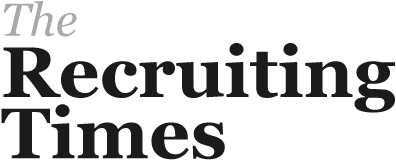
The Key to Recruiting Success: Social Media
Attracting Employees via Social Media
Sharing job openings on social media is a great first step, but you can use these tips to take your company’s social recruitment to the next level.
Spotlight Company Culture
Your business becomes infinitely more relatable when you discuss company culture online. This not only attracts customers and clients, but potential job candidates as well. If someone is already a follower of your company’s social media, there’s a pretty good chance that they connect with you on a personal level and that their values align with your brand. This eliminates the need to ask candidates what they know about your company because they’re already well informed.
Show Off Your Employees
Everyone wants to feel valued. Use your company’s social media to show off your employees and their accomplishments. These images will also show potential candidates what their colleagues would be like and gives them a feel on whether or not they think they could fit into the dynamic. Check out Apple CEO Tim Cook’s Twitter page. He is a great example of showing off and praising employees on a regular basis.
Publish Valuable Content
Potential employees and customers need a reason to follow you. Publishing valuable content is a great way to convince them. The easiest way to expand your reach and then keep those followers is posting at least once per weekday. Share original content or relevant posts from an external source that you believe will benefit your audience.
Use a Social Media Management Platform
Don’t let social media and the need to post on multiple platforms scare you. Programs like Buffer, HootSuite, HubSpot, MeetEdgar, TweetDeck, Sprout Social, etc. brings all of your accounts into one convenient place for you to manage.
Strive for Rich Media
Text-only posts are boring and won’t stand out. In fact, posts on LinkedIn that include images receive 98 percent more comments compared to those that don’t. Adding videos to your posts is another great way to include rich media.
Encourage Employee Participation
Employees [LINK TO IT TAKES A VILLAGE ARTICLE THAT I WROTE] are the face of your brand and encouraging them to share workplace culture will only benefit your recruitment efforts. Follow employees with your company’s accounts and share their posts about work in order to add authenticity to your pages.

Social Platforms
LinkedIn is the most professional social networking site and boasts over 560 million users. With over 40 million students and recent college graduates on the site, it is a great place to recruit new talent entering the workforce.
The first step to recruiting on LinkedIn is setting up a company page. LinkedIn provides you with the template, so all you have to do is fill in the details. Once your page is set up, it is important to add followers in order to expand your company’s reach.
LinkedIn Recruiter
LinkedIn Recruiter is a platform within the social network created to help recruiters find, connect with and manage candidates. This tool also allows you to connect to your applicant tracking system (ATS) in order to collaborate with others more efficiently, save time, and ensure accuracy across systems.
Groups
Use LinkedIn Groups to connect with other professionals in your field, kind of like a virtual professional association. Posting job openings in those groups will allow you to target the specific candidates you are looking for.
Ads
Use targeted ads to attract potential candidates to your job openings. LinkedIn allows you to hone in on specific people by several factors, including job function, seniority, company name, geography, industry, skills, field of study and more.
Facebook is the largest social network with more than 1.5 billion members. The site was originally intended to connect friends, family and coworkers, but has expanded to include organizations, businesses and interests.
Job Openings Tab
Create a custom job openings tab on your Facebook page for current openings. This way, you can attract applicants out of the pool of followers you already have and potentially increase the number of qualified applicants to your open positions.
Ads
Like LinkedIn, Facebook offers targeted ads, which you could use to promote job openings. Facebook Core Audiences helps you select the right recipients for your ad based on several factors such as location, demographics, behavior, connections and interests.
According to research, 85 percent of followers feel more connected with a small business after following them on Twitter and 42 percent of Twitter users use the site to learn more about products and services.
Hashtags
Using hashtags will expand your audience by allowing people to find tweets that interest them. The first step is to come up with a hashtag that will be used with all recruitment-related posts. It should be simple, unique and relevant. Starbucks uses #sbuxjobstalk and Disney uses #LifeAtDisney.
It is also wise to use existing broad hashtags so that more people will see your posts. Terms like #jobs, #jobsearch, #jobhunt, #careers and #jobopening will help people find you.
Instagram is now the king of social engagement, according to a report by Forrester, so if you want to attract high quality candidates via social media, a business account is a must-have.
Keep it real
Instagram is very visual, so take real photos and video of your products and employees to give potential candidates a sneak peek into what it’s like to work at your company—the work, the play and everything in between. Take Novartis’ lead and share stories from patients who have benefited from using your products.
YouTube
Half of all Internet users (about 1.9 billion users) visit YouTube every month and they watch billions of hours of video. That means that there is a huge untapped pool of potential candidates waiting for you on the social network.
Utilize Video Marketing
Creating a short, fun video about what it’s like to work at your company and why candidates should apply for a job opening is a great way to use video marketing to your advantage.
Your Website or Blog
Don’t forget to create a permanent Careers page on your website to post job listings. This is a great place to link back to from social posts so that candidates can easily find out more information on your company.










 Hiring “right” can be an expensive, time intensive process. a recruiter or recruiting firm can run the gradient of talent ‘ally’ to ineffective gatekeeper and from a cost perspective: tremendous value to incredible waste of money. It is crucial to fully qualify and be comfortable with the individuals, team or firms that are performing your recruitment as they are a direct reflection on your company(good or bad). so carefully consider the
Hiring “right” can be an expensive, time intensive process. a recruiter or recruiting firm can run the gradient of talent ‘ally’ to ineffective gatekeeper and from a cost perspective: tremendous value to incredible waste of money. It is crucial to fully qualify and be comfortable with the individuals, team or firms that are performing your recruitment as they are a direct reflection on your company(good or bad). so carefully consider the  You don’t need to spend outrageous amounts of money to get your vacancy out to the masses. Social media is a fantastic free resource for finding candidates who are actively looking for work. So, get creative and think about where your top performers hang out! Facebook, Twitter and LinkedIn are the most popular platforms used by both job seekers and passive candidates. Take the time to connect with passive candidates as well because they may become job seekers tomorrow.
You don’t need to spend outrageous amounts of money to get your vacancy out to the masses. Social media is a fantastic free resource for finding candidates who are actively looking for work. So, get creative and think about where your top performers hang out! Facebook, Twitter and LinkedIn are the most popular platforms used by both job seekers and passive candidates. Take the time to connect with passive candidates as well because they may become job seekers tomorrow.